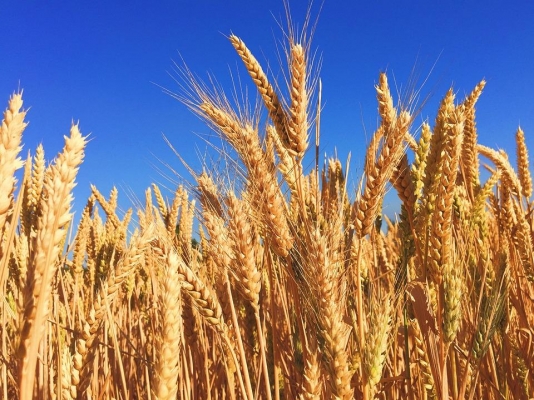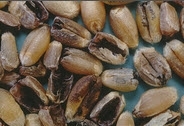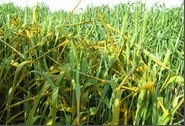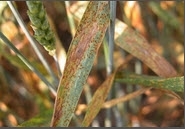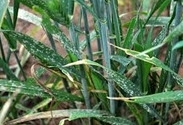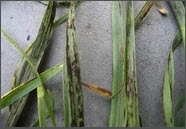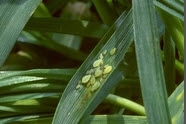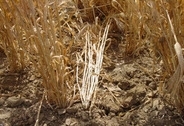C 306: Suitable for poor soil and less irrigated areas. Grains are medium in size and shiny, hard and having amber color. Gives average yield of 10 qtl/acre.
Sonalika: An early maturing single dwarf wheat with wide adaptation and attractive amber grains.It is suitable for late sowing and resistant to rusts. Gives average yield of 16.8 qtl/acre.
PBW 343: Suitable for irrigated and late sown areas. Ready to harvest in 130-135 days. It is resistant to lodging, water logging conditions. It is also resistant to kernal bunt and tolerant to blight. It gives average yield of 19 qtl/acre.
WH 711: Suitable for timely sown, irrigated and fertile soils of Haryana. Grains are of medium size, hard and of amber color. Gives average yield of 24 qtl/acre.
UP 2338: Suitable for timely and late sowing. Grains are bold and hard. Gives average yield of 23 qtl/acre.
WH 542: Suitable for timely sowing fertile and irrigated lands. Grains are of medium size, hard and of amber color. Gives average yield of 23 qtl/acre. It is also resistant to kernal bunt.
WH 416: Suitable for early and timely sowing. Suitable for low fertile but irrigated lands. Grains are long, medium in size with amber color. Resistant to brown rust but susceptible to yellow rust. Gives average yield of 22 qtl/acre.
WH 283: Suitable for timely sowing areas. Grains are medium, hard and having shiny amber color. Resistant to brown and yellow rust. Gives average yield of 20 qtl/acre.
WH 147: Suitable for timely sowing, low fertile and irrigated lands. Grains are medium, soft and having shiny amber color. Resistant to brown rust and kernal bunt diease. Gives average yield of 20 qtl/acre.
WH 157: Suitable for timely sowing, fertile and irrigated lands. Grains are bigger, hard and having color. Gives average yield of 19 qtl/acre.
Raj 3765: Suitable for late sowing, fertile and irrigated lands of Haryana. Resistant to yellow and brown rust. Gives average yield of 18.5 qtl/acre.
Kathiya Gehu Varieties
WH 912: Suitable for timely sowing, irrigated areas of whole Haryana. Grains are long, bold with attractive color. Gives average yield of 22 qtl/acre.
WH 896: Suitable for timely sowing, irrigated areas of whole Haryana. Grains are big with attractive color. Gives average yield of 21 qtl/acre. Resistant to rust and kernal bunt disease.
Other states Variety
Kalyansona: A double dwarf wheat with wide adaptation recommended for cultivation all over India. This variety is very vulnerable to rust. Therefore, it is advisable to grow it only in rust free regions.
UP(368): High yielding variety developed by Pantnagar. It is resistant to rust and Karnal bunt.
WL(711): It is single dwarf, high yielding and medium maturing variety. It is moderately susceptible to powdery mildew and Karnal bunt.
UP(319): It is triple dwarf wheat with high level of rust resistance. To avoid losses to shattering, it should be harvested at appropriate time.

